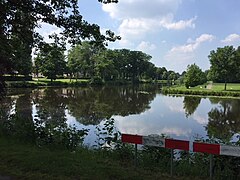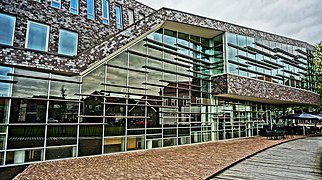|
Coevorden
Coevorden (Dutch pronunciation: [ˈkuvɔrdə(n)] ⓘ; Dutch Low Saxon: Koevern; German: Kuhfurt) is a city and municipality in the province of Drenthe, in the east of the Netherlands. During the 1998 municipal reorganisation in the province, Coevorden merged with Dalen, Sleen, Oosterhesselen and Zweeloo, retaining its name. In August 2017, it had a population of 35,267. EtymologyThe name Coevorden means "cow ford(s)" or "cow crossing", similar to Bosporus or Oxford.[5]  History Coevorden received city rights in 1408. It is the oldest city in the province of Drenthe. The city was captured from the Spanish in 1592 by a Dutch and English force under the command of Maurice, Prince of Orange. The following year it was besieged by a Spanish force but the city held out until its relief in May 1594. Coevorden was then rebuilt in the early seventeenth century to an ideal city design, similar to Palmanova. The streets were laid out in a radial pattern within polygonal fortifications and extensive outer earthworks. The city of Coevorden indirectly gave its name to both Vancouver, British Columbia, Canada and Vancouver, Washington, named after the 18th-century British explorer George Vancouver. The explorer's ancestors (and family name) originally came to England "from Coevorden" (van Coevern in Dutch Low Saxon).[5] There is also a family of nobility with the surname van Coeverden, sometimes spelled with a K (as with Canadian kayaker Adam van Koeverden). Geography Coervorden is located at 52°40′N 6°45′E / 52.667°N 6.750°E in the south of the province of Drenthe in the east of the Netherlands. The population centres in the municipality are:
International relationsCoevorden is twinned with: 
TransportationThere are two railway stations in the municipality: Notable people
See also
Gallery
References
External links |
|||||||||||||||||||||||||||||||||||||||||||||||||||








